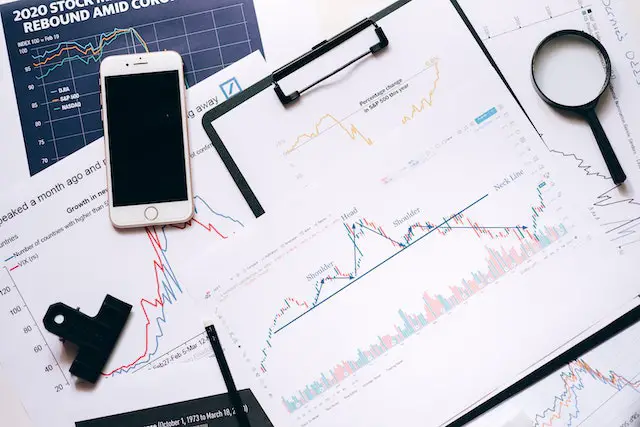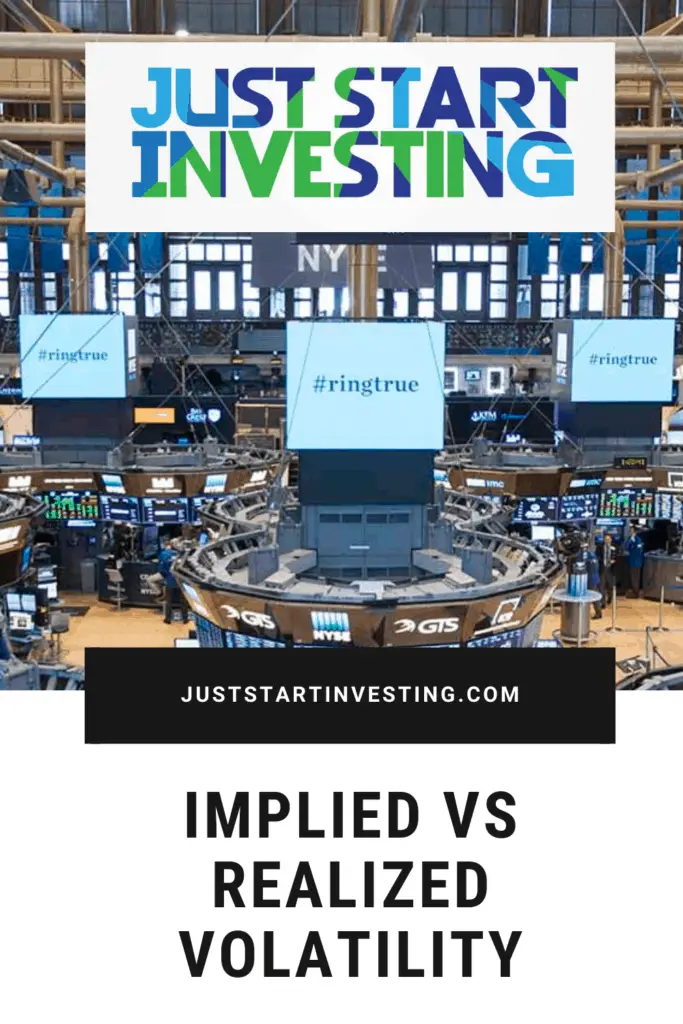Volatility measures the degree of variation in the price of a security. Though known for its use by options traders, volatility measurements is one of the three core considerations (alongside price and volume) that even equity traders should use — because as this article will show, it can indicate a stock market correction.
There are two types of volatility traders must have in their toolbelt — Implied & Realized. To begin with, implied volatility relates to derivatives, and realized relates to equities.

Implied vs Realized Volatility: The Facts
Implied Volatility
Implied volatility represents the current market price of volatility. This means that it is calculated on the basis of the supply and demand for a derivative of a given instrument. Best explained as an example: The SPDR S&P 500 ETF (SPY) is a derivative of the S&P 500 index and calculating the degree of variation between its bids and asks gives us its implied volatility. This information is readily available and there’s no need for manual calculations. Importantly, implied volatility is forward-looking, it is projected, it tells us how great the volatility may be going forward.
Realized Volatility
Realized volatility is the actual movement of the underlying instrument, and is calculated on a low-to-high historical basis. To continue on the S&P 500 example, its realized volatility is the calculation of its degree of variation between its low prices and high prices. Again, the information is readily available and there’s no need for manual calculations. And here, importantly realized volatility is historical, it has happened, and it only tells how great the volatility has been.
Additional Research
In reviewing and displaying the results of the regression analyses using specific methodology and research, we can make a wider behavioral comparison and look at the findings. Research questions and hypotheses will be answered by analyzing the regression coefficients.
Among the tables are coefficients, T-values, and the adjusted R-squared, which tells us how much of the dependent variable is explained by virtue of the independent variables.
There were three regressions used for the different stock markets without splitting the data based on past or future market returns that had standard errors of Newey-West with 30 lags.
A significant intercept of zero would be the ideal scenario for the first two regressions that predict future realized volatility, as well as an independent variable closer to 1.00. Such unbiased and efficient independent variables are ideal. If the last regression is run without creating subgroups, the variable with the highest forecasting value is the one with the most significant forecast.
Historical Volatility
| Dependent | Intercept | RVt-1 | Adjusted R2 |
| RV AEXt | −0.51**(−6.25) | 0.71**(16.90) | 51% |
| RV DAXt | −0.50**(−6.76) | 0.70** (16.47) | 48% |
| RV FTSEt | −0.59** (−6.53) | 0.69** (15.47) | 47% |
| RV CACt | −0.53**(−6.63) | 0.68** (15.23) | 46% |
Displayed are the results of the regression equation (RVt = α0 + α1RVt−1 + εt) using Newey West standard errors with 30 lags.
The RVt−1 displays the natural log series of the historical volatility of the previous 30 trading days. The realized volatility series displayed as the dependent variable also actually denotes the natural log series of the corresponding realized volatility at time t. * and ** represent 5% and 1% significance levels, respectively.
Implied Volatility
| Dependent | Intercept | IVt | Adjusted R2 |
| RV AEXt | −0.24**(−3.27) | 0.98**(21.42) | 59% |
| RV DAXt | −0.17**(−2.67) | 0.99** (23.33) | 59% |
| RV FTSEt | −0.31** (−3.86) | 0.94**(20.45) | 58% |
| RV CACt | −0.25** (−2.79) | 0.93** (16.25) | 53% |
Displays the results of a regression equation (RVt = α0 + α1IVt + εt) using Newey West standard errors with 30 lags. The IVt displays the natural log series of the implied volatility for the coming 30 trading days.
The realized volatility series displayed as the dependent variable denotes the natural log series of the corresponding realized volatility at time t. * and ** represent 5% and 1% significance levels, respectively.
More information and deeper analysis on this data can be found on the following link!
So What?
Now that we have our Implied vs Realized volatility, they tell us how great the volatility has been and may be. This is interesting information on its own, but when comparing the two we get the real trading magic. Consider, if implied volatility is greater than realized — it means that market participants are expecting more volatility to come, and are paying extra for the expected risk implied by the volatility. So, if: (1) the risk is expected and paid for, and (2) the market moves say down for a few percent, but (3) the implied vs realized volatility relation doesn’t move as much, then — you have a valid reason to buy the dip.
Implied vs Realized Volatility
Watch out for the difference between implied vs realized volatility vs the underlying instrument you own/watch, it will tell you if it’s time to get out or not. In 2021, this process would’ve stopped you from getting out of the S&P 500 seven times. This is how the pros do it!
If you want to know more about investing, check out these articles:
- How to Invest in the S&P 500 and Build a Single Fund Portfolio
- Stock Market Crash 2021: Ultimate Predictions
- How to Find the Best High Dividend Stocks

Partner at Vega Capital Management - a private funds management company.
An experienced portfolio manager with 10+ years of proven and reputable track record in investment management and financial analysis. Currently, a partner at one of the fastest-growing private fund management companies in southeast Europe, Kiril has been tending to a loyal international base of client-investors and partners. When he is not crunching numbers and increasing his client’s wealth, he reminisces about his Michelin-star restaurant cheffing years and fondness of the culinary arts.


